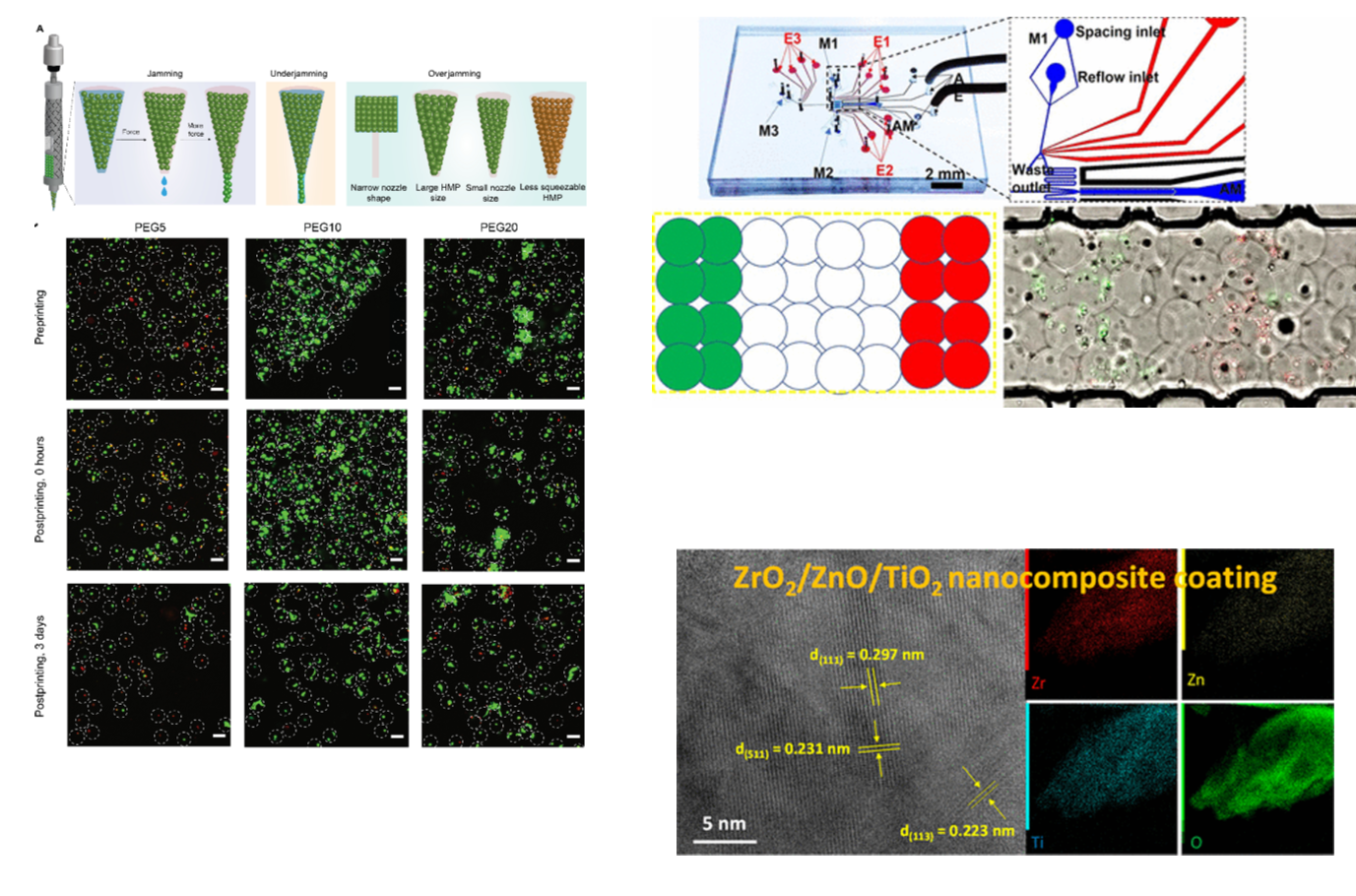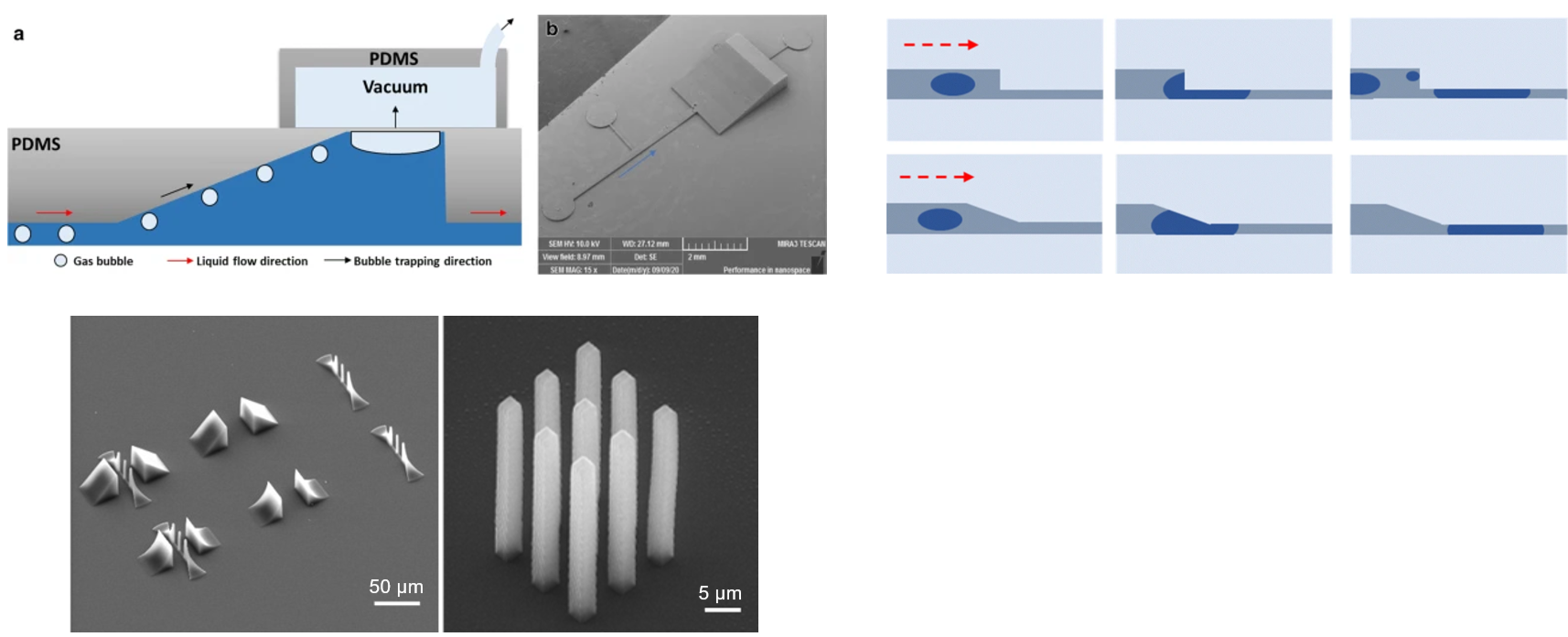Alternative materials and Fabrication methods
Instead of using water-in-oil emulsion as the microarray carriers, we are now exploring the possibility of other types of encapsulation, such as hydrogel or other photocurable resins, to enable certain additional functionalities that were not achieved. We have also tried other innovative fabrication methods as an alternative approaches to make microfluidic systems.

Selected Project/Publications
- Microfluidic Dielectrophoretic Method Enables On-Demand Spatial Arrangement of Bacteria-Encapsulated Agarose Gel Microparticles,
J. Dai, C. Huang, H. Zhang, R. Samuel, Y. Li, A. Jayaraman, P. de Figueiredo, and A. Han,
Analytical Chemistry, Vol. 94 (38), pp. 13197-13204 (2022) - ZrO2/ZnO/TiO2 Nanocomposite Coatings on Stainless Steel for Improved Corrosion Resistance, Biocompatibility
M. Lee, S. -I. Han, C. Kim, S. Velumani, A. Han, A. H. Kassiba, and H. Castaneda,
Applied Materials & Interfaces, Vol. 13, 13801-13811 (2022) - Generalizing Hydrogel Microparticles into a New Class of Bioinks for Extrusion Bioprinting,
S. Xin, K. A. Deo, J. Dai, N. K. R. Pandian, D. Chimene, R. Moebius, A. Jain, A. Han, A. K. Gaharwar, D. L. Alge,
Science Advances, Vol. 7 (42), eabk3087(2021) - Creating Physicochemical Gradients in Modular Microporous Annealed Particle Hydrogels via a Microfluidic Method,
S. Xin, J. Dai, C. A. Gregory, A. Han, D. L. Alge,
Advanced Functional Material, 1907102 (2019)

